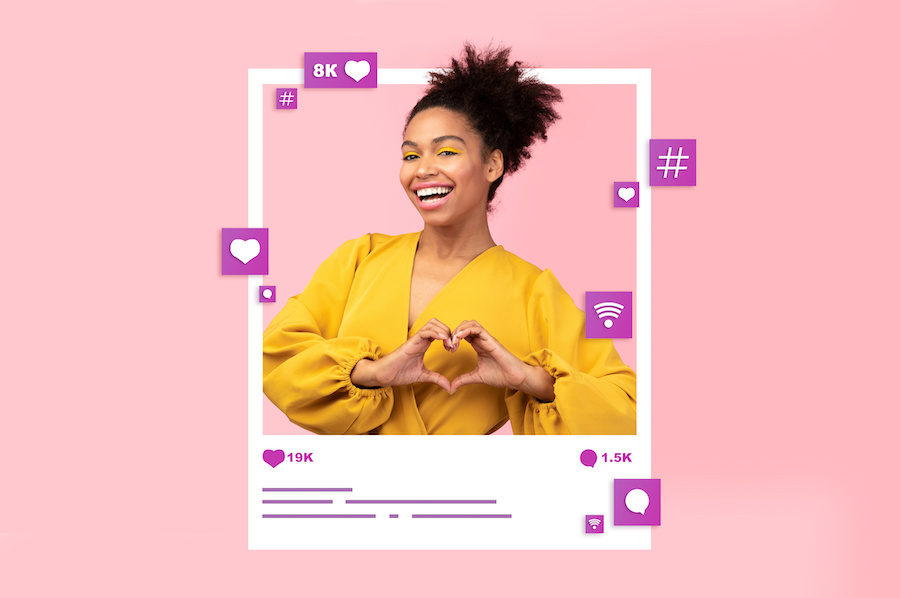The Power of Influencer Marketing
By Lisa Ann Pinkerton
March 2022
As social media platforms mature and multiply, it’s becoming increasingly clear that traditional journalists are no longer the only avenue for media coverage and market exposure. Users can choose the content they prefer to follow, view and engage with due to social media’s diverse and interactive culture.
Influencer marketing helps brands overcome this model of personalized news feeds through their capability to quickly produce content, provide social proof, and utilize its diverse backgrounds and interests for content that is strongly connected with target audiences.
This is a strategy that conventional retail brands targeting consumers have figured out in the past few years. However, for companies that sell to other businesses or utilities (as with many energy transition companies), the clout social media influencers carry is still an untapped resource.
As the news landscape continues to splinter and expand, businesses can no longer rely solely on connecting with reporters to gain maximum media exposure. Long gone are the days of people exclusively following major media outlets or trade publications to catch up on relevant news.
People, and even reporters, turn to influencers and bloggers to find the latest trends or information because their personalities build a sense of trust and fan bases. Influencers are today’s “man on the street.”
With the movement toward video and audio-based content, influencers can provide an increasingly personal experience for their audiences compared to previous text and image-based content. Their fan bases are stronger than ever and equally vital as traditional media outlets.
Influencer marketing works because people want to buy from someone they trust. Whether it’s a friend, role model, or someone with the same career or of the same generation, people are looking to be sold to by their peers and those they feel they know. Influencers with smaller followings or a part of niche markets are gaining greater attention from businesses, as their engagement rates tend to be higher than macro- and mega-influencers.
To fully capitalize on today’s media environment and effectively reach target audiences, today’s businesses have the opportunity to include social media influencers in their PR and communications campaigns.
“Authenticity” has been a long-standing buzzword in the influencer marketing industry because of its central importance in fortifying the mutual relationships between brands, influencers and target audiences. The key is to go beyond the product promotion request and invite the influencer to participate in a larger story and body of content that makes the promotion seem organic and natural.
Influencer marketing 101
Influencer marketing is a strategy that connects brands to a credible individual within a niche community with an engaged and large following. Generally, they are active on multiple platforms, such as Instagram, Twitter, Facebook, YouTube and TikTok, and may even promote themselves through a website, podcast or eBooks.
Companies do not employ these individuals full time. Like freelancers, influencers operate independently with brands to create content that feels authentic to them and integrates brand messages.
Additionally, the pandemic has bolstered preexisting trends within influencer marketing since people are spending more time on social media.
Just because a marketing tactic is trending doesn’t mean that companies will succeed in their execution. It takes creativity to think about which messages are best suited to be carried by an influencer and which type of influencer to target. There is significant growth in paid marketing and will continue to be for companies and influencers to collaborate and produce meaningful content.
Whether it’s through social media posts, YouTube videos, podcasts or any other media form, influencers are constantly marketing themselves toward businesses in the hopes of collaboration opportunities. So, companies should give influencers preferential treatment with the inside scoop on new product launches, sales or company news.
Businesses also should provide the opportunity to create a story around company news/projects to easily fit into the influencer’s programming and reach their target audience in a more personal, genuine way. Additionally, compensating an influencer for their support is necessary to ensure quality brand exposure to a target market.
Real-world success
Examples of effective influencer marketing campaigns that did not rely on simply paying an influencer to post about a product are two RV trips Winnebago sponsored to promote its line of wheelchair-ready motorhomes.
Managed by my firm, Technica Communications for the Winnebago Specialty Vehicle Division, the influencers Roll with Cole & Charisma and travel blogger Cory Lee were part of a key strategy to launch the company’s line of Accessibility Enhanced RVs and gain brand awareness among a category of consumers that were difficult to reach.
Mobility-restricted individuals have been critically underserved and underrepresented in the RV market, and the prospect of traveling can be daunting and prohibitive both physically, mentally and economically.
To overcome this challenge and draw more awareness, Winnebago expanded its marketing to influencer campaigns. These campaigns helped Winnebago reach target audiences through building relationships with real-world influencer trips where they can experience the benefits of using the Specialty Vehicles firsthand.
In 2020, the first influencer trip was conducted by the popular inter-abled couple “Roll with Cole & Charisma.” At the start of the campaign, they had more than 273,000 subscribers on YouTube, 35,000 followers on Instagram and nearly 18,000 followers on Facebook. Through their daily posts and stories documenting their trip in the Winnebago AE RV, the campaign garnered almost 8 million views.
The campaign had a total reach of nearly 15,000, with more than 45,000 unique impressions. It also had an engagement level of 1,131, and followers on the Winnebago AE social media accounts grew by close to 15 percent.
In 2021, accessibility travel blogger Cory Lee took an Accessibility Enhanced RV tour to highlight the newest features Winnebago had brought to the line. Lee had more than 15,000 followers on Instagram during the campaign and more than 25,000 followers on Facebook and Twitter combined.
From Lee’s daily posts and stories highlighting each day’s adventures with the RV, the campaign resulted in a total reach of nearly 16,000, with more than 47,000 unique impressions. The campaign had an engagement level of 1,131, and followers on the Winnebago AE social media accounts increased by 428, 300 percent more than a similar influencer trip in 2020.
By spending a few thousand dollars on both influencer campaigns, Winnebago increased its online presence and obtained sales inquiries and leads during the trips.
Some companies hold to the principle of avoiding paid media exposure because they believe their brand is too valuable to stoop to such pedestrian activities or the opportunity is ineffective.
However, the ever-increasing reality is that the media landscape is crowded, and many people turn to social media to get their news. The result is that most brands require a combination of “earned” and “paid” exposure to gain suitable attention from target audiences.
In the coming years, organizations that comprehend the worth of influencers, and foster unique projects around their substance to cause the advancement of their offerings to feel organic to the follower, will end up more effectively reaching their clients.



